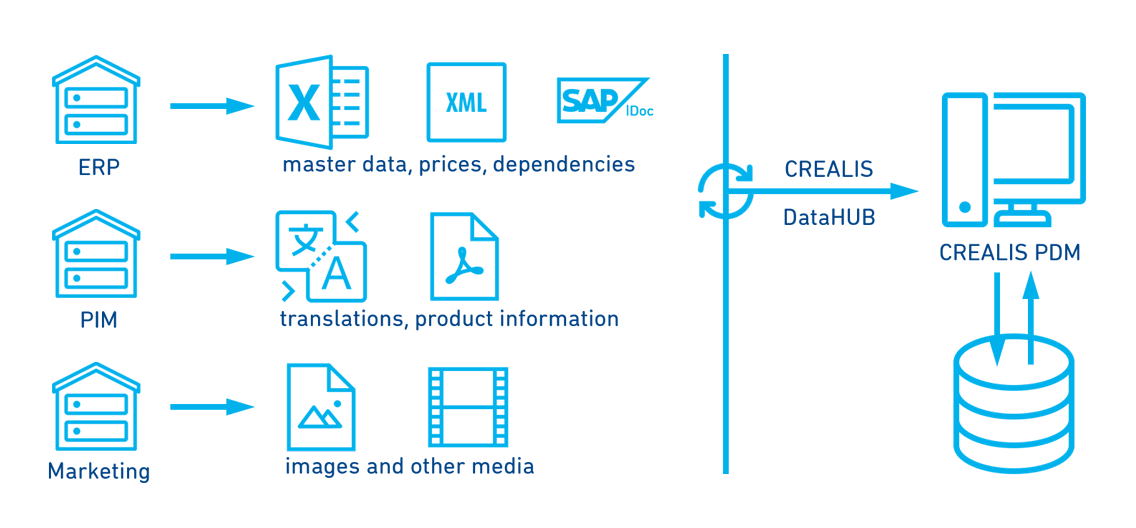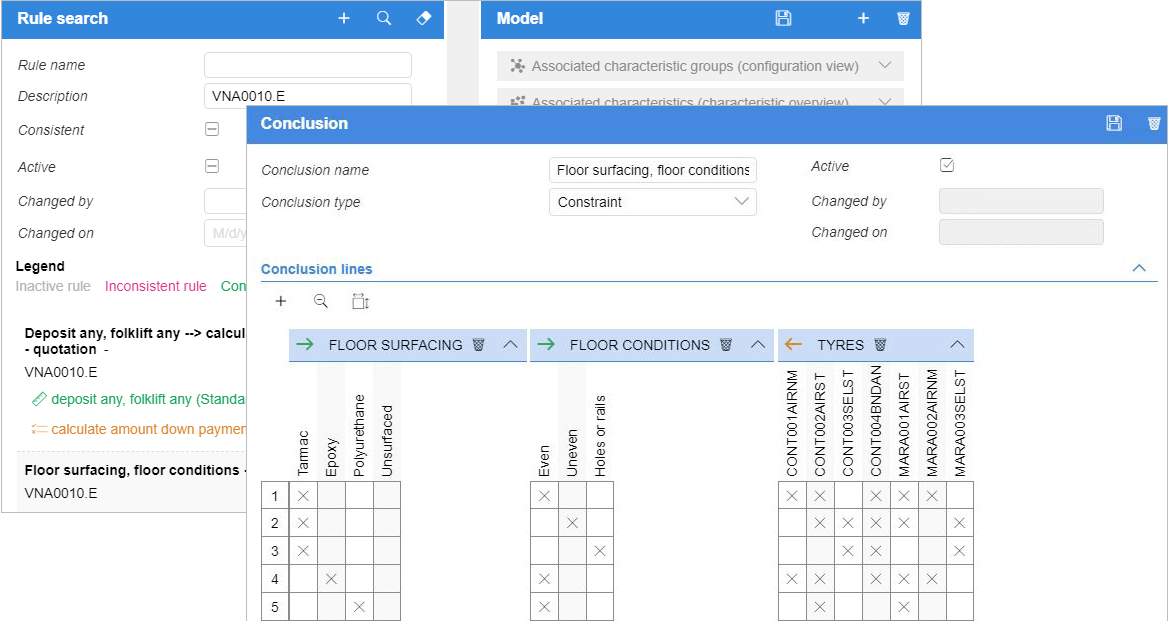CREALIS® PDM Product Management
Knowledge management for configuration purposes: structuring complex product knowledge and making it usable for sales
CREALIS® PDM Product Management
Knowledge management for configuration purposes:
structuring complex product knowledge and making it usable for sales
CREALIS® PDM is a comprehensive tool for modelling complex products. It is used for the structured, rule- and interface-based representation and utilisation of the available knowledge about the product and enables effective navigation through the product data. CREALIS® PDM includes powerful administration functions that allow data to be updated by several experts working in parallel.
Easy handling
The product data management (PDM) interface is extremely intuitive. Using CREALIS® PDM does not require programming skills. All content and dependencies of the products to be configured are managed in CREALIS® PDM. Intuitive search masks support the structured view of the data. The product data is represented on a modular basis as parts, packages and configurable models and enriched with technical and commercial properties. Dependencies as well as constraints and exclusions are defined in If-Then rules, constraints (validity tables), procedural and slot rules.
The user interface of the CREALIS® configurators is generated from the data managed in CREALIS® PDM. The product configurator and the PDM are based on the current HTML standards and support the modern web browsers used on all common operating systems and standard devices, including tablets and smartphones.


Importing product information
The use of a wide variety of different data imports makes modelling easier. Each project defines the priority of the data. This relates to more than just the master data such as parts, articles and assemblies, It also means there is an original source for each master data structure required for a configurator. (PIM and CMS supply marketing texts, images and documents. CAD supplies 3D data. ERP supplies master data, properties and prices.) For each of these structures there are defined import structures and process definitions that describe how the data is to be handled. The modelling concepts allow a completely automatic update process for the data from the source systems to the configurator for the purpose of complete process integration. The reference to a model feature, e.g. an article list, includes all articles as possible values. If the list is updated from the data of a higher-level ERP system, the list will also be available in the configurator. When a corresponding attribute model is used, the dependencies update themselves automatically.

Consistent multilingualism in all model and data structures
Short texts, long texts and information texts are available for configurator questions and answers (features and values) within the models that can be translated for any language (Unicode-compatible). They can be conveniently imported using Excel. Documents and document templates can be adapted to the specific market according to their characteristics. Translatable short texts, long texts and information texts are also available for parts, assemblies and models.
Control of validity periods and market-specific characteristics
The availability of parts, assemblies and models in the configurator can be controlled in detail using validity periods (commencement and expiration dates) and market restrictions. Both pieces of information can be combined so that, for example, the period of availability in one or more markets can be limited. Prices for parts and assemblies can also have temporal and market validity. The appearance of a configurable product in the product catalogue can also be controlled in detail using validity periods and market restrictions. This enables certain products only to be displayed in selected markets. The text-based and visual characteristics of product catalogue entries can also be adapted to a specific brand.
The model structure and thus the description of the variance of a product can also be controlled in detail in terms of time and market. For example, certain inquiries (features) are only displayed in certain markets or rules can be restricted to certain markets or certain periods of time.
Data maintenance rights can be adapted to the specific market. It is possible to separate master users and market users.
FAQs CREALIS® PDM
CREALIS® PDM is the maintenance system for the CREALIS® product family. PDM is used to maintain the relationships between the individual modules.
This is where configuration-relevant product information on articles, assemblies, parts lists or variant rules is maintained and managed. At the same time, dependencies, validity periods and market characteristics are modelled here, thus ensuring data sovereignty and a single source of truth.
With CREALIS® PDM, you can avoid redundant data by reusing components and features. Data imported from ERP or other systems can be supplemented and adapted. Maintenance is minimal, and no programming knowledge is required.
CREALIS PDM® provides the database for CREALIS® CPQ: the configuration in CPQ is generated directly from structures stored in PDM. All content maintained in PDM, from variant rules to price and structure data, is automatically fed into the configurator. In addition, documents, images and 2D/3D visualisations can be added to give sales and customers a clear picture of the product.
Yes, CREALIS® PDM is fully multilingual. All texts, descriptions and properties can be maintained in different languages. This allows the system to be used internationally and supports sales teams in different markets.
Yes, CREALIS® PDM can be used internationally and supports the requirements of individual markets.
Yes, CREALIS® PDM has integrated user and rights management. This allows you to flexibly define different roles and authorisations, for example for central master users who maintain global product data and market users who make regional adjustments or translations.